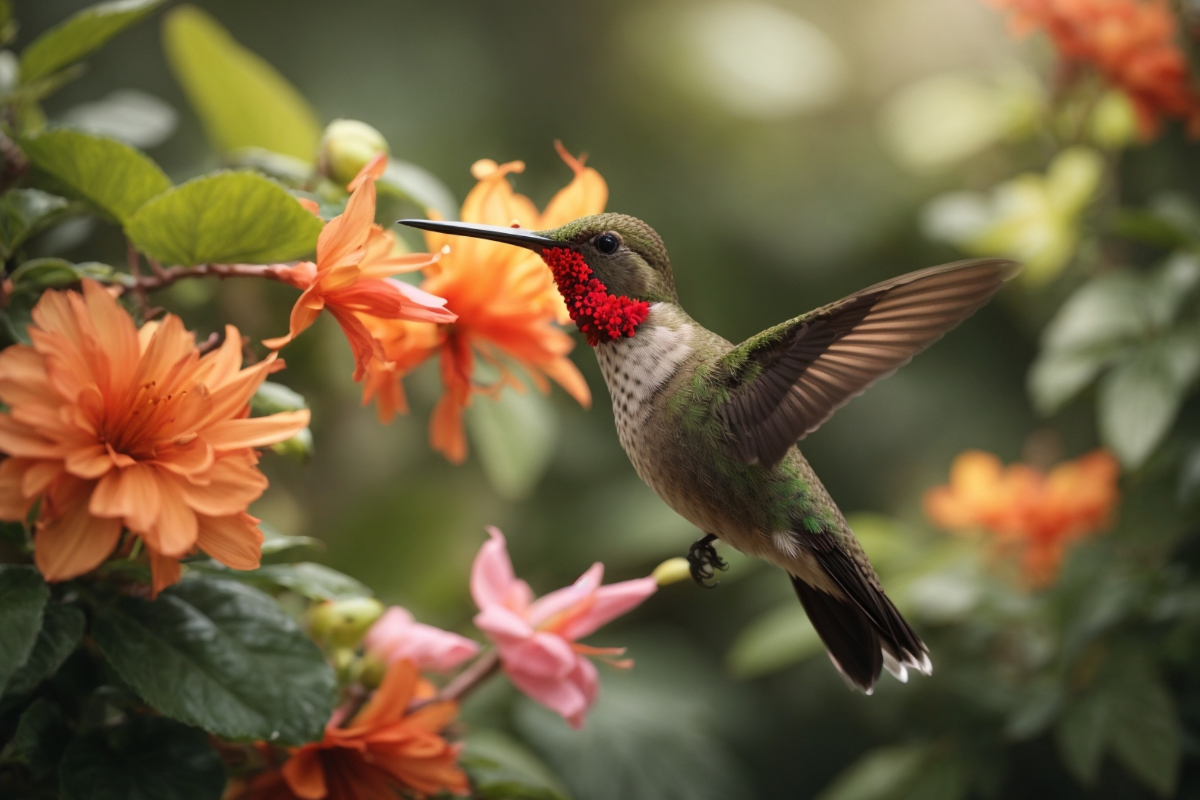Hawaii, with its breathtaking landscapes and picturesque views, may seem like the perfect sanctuary for various bird species, including hummingbirds. However, upon closer inspection, one would be surprised to find that hummingbirds are notably absent in this island paradise.
Let’s delve into the birdlife of Hawaii and uncover the mystery behind why hummingbirds are not found in this seemingly ideal environment.
Do Hummingbirds Live in Hawaii?
Contrary to expectations, no hummingbirds are native to Hawaii. Despite its tropical environment, these birds are absent from the island’s endemic species. Instead, Hawaii is home to native honeycreepers, which fulfill a similar role to hummingbirds by feeding on nectar and pollinating flowers in the local ecosystem.
Why are there No Hummingbirds in Hawaii?
The absence of hummingbirds in Hawaii can be attributed to its geographical remoteness, which prevents natural migration. Additionally, Hawaii’s indigenous honeycreepers have evolved to fill the ecological role typically associated with hummingbirds in other regions. These honeycreepers play a crucial role in pollination and maintaining the balance of the island’s ecosystem.
Distinct Differences between Hummingbirds and Honeycreepers
While hummingbirds and honeycreepers both feed on nectar, they differ in origin, appearance, behavior, and ecological roles. Hummingbirds are primarily found in the Americas, from Alaska to Tierra del Fuego, while honeycreepers are native to the Hawaiian Islands. Hummingbirds are known for their iridescent feathers, small size, and rapid wing beats, allowing them to hover in place. On the other hand, honeycreepers display a variety of bright colors, particularly reds, and have evolved different beak shapes and sizes to adapt to specific food sources in Hawaii. Hummingbirds can hover in mid-air by rapidly flapping their wings, while honeycreepers typically perch on branches or flowers while feeding.
Birds and the Pineapple Industry
The pineapple industry, a significant part of Hawaii’s economy, has indirectly influenced the island’s avian life. While pineapple crops may not directly attract hummingbirds, they indirectly support many animal species. For example, the introduction of Barn owls to manage the rodent population threatening pineapple crops showcases the far-reaching impact of human activities on bird species in these remote islands.
Preserving the Hawaiian Ecosystem
Preserving Hawaii’s unique biodiversity and ecosystem is crucial for future generations. The islands provide breeding grounds and habitats for endemic bird species that are unavailable elsewhere. Protecting this ecosystem ensures the survival of these species and maintains the islands’ distinct character. Hawaii’s strict bird importation laws aim to safeguard native and endemic bird species and maintain the delicate balance of its unique ecosystem.
Final Thoughts
Instead of fixating on the absence of hummingbirds, let us appreciate the unique and diverse species that fill the skies of Hawaii. The non-existence of hummingbirds in Hawaii highlights the splendor of endemic bird species and contributes to the islands’ distinctiveness. Hawaii’s charm lies in its unexpected natural wonders.
FAQs – Are there hummingbirds in Hawaii?
Q: Why are there no hummingbirds in Hawaii?
A: The vast expanse of ocean waters between the Hawaiian islands and the mainland has prevented hummingbirds from naturally migrating to the islands. Additionally, strict regulations against importing birds, including hummingbirds, have been implemented to protect the islands’ unique and delicate ecosystem.
Q: What role does the Hummingbird Moth play in Hawaii’s ecosystem?
A: In the absence of hummingbirds, the Hummingbird Moth fills a vital role in pollination. Similar to hummingbirds, these moths have long, brush-tipped tongues that allow them to access nectar deep within tubular flowers.
Q: How has the pineapple industry impacted bird life in Hawaii?
A: The pineapple industry has had a significant impact on the bird population in Hawaii. The introduction of Barn owls, for instance, was a measure to control the rodent population that was threatening pineapple crops.
Q: Why are bird importation laws strict in Hawaii?
A: Hawaii has stringent bird importation laws to protect the native and endemic bird species and maintain the balance of its unique ecosystem. These laws also prevent the introduction of potential invasive species that could disrupt this delicate balance.
Q: Are there any bird species similar to hummingbirds in Hawaii?
A: While there are no hummingbirds in Hawaii, the Hummingbird Moth mimics several hummingbird behaviors. It shares a similar affinity for tubular flowers and even has comparable rapid wing movements.
Q: How does the absence of hummingbirds affect the Hawaiian ecosystem?
A: While hummingbirds are known pollinators, their absence in Hawaii does not have a detrimental effect because other species, such as the Hummingbird Moth, fill the role of pollination.
Q: Why is it essential to protect the Hawaiian ecosystem?
A: Protecting the Hawaiian ecosystem is vital as it is home to a host of endemic species that rely on this specific environment for survival. Maintaining this ecosystem ensures the survival of these species for future generations and preserves the unique character of the islands.
Q: How do Hawaii’s geographic features influence its birdlife?
A: Hawaii’s isolated location in the Pacific Ocean has shaped its unique birdlife. With a vast ocean separating it from other land masses, bird species on the islands have had to adapt and evolve to survive in this distinct environment.
Q: Are hummingbirds native to any other Pacific islands?
A: No, hummingbirds are native to the Americas. There are no species of hummingbirds native to any Pacific islands.
Q: What are some fascinating bird species native to Hawaii?
A: Hawaii is home to many unique and fascinating bird species, including the Nene (Hawaiian Goose), Hawaii’s state bird, the Laysan Albatross, known for its vast wingspan, and the vibrant red Honeycreeper species. However, it’s worth noting that some of these species are endangered due to habitat loss and the introduction of non-native species.
